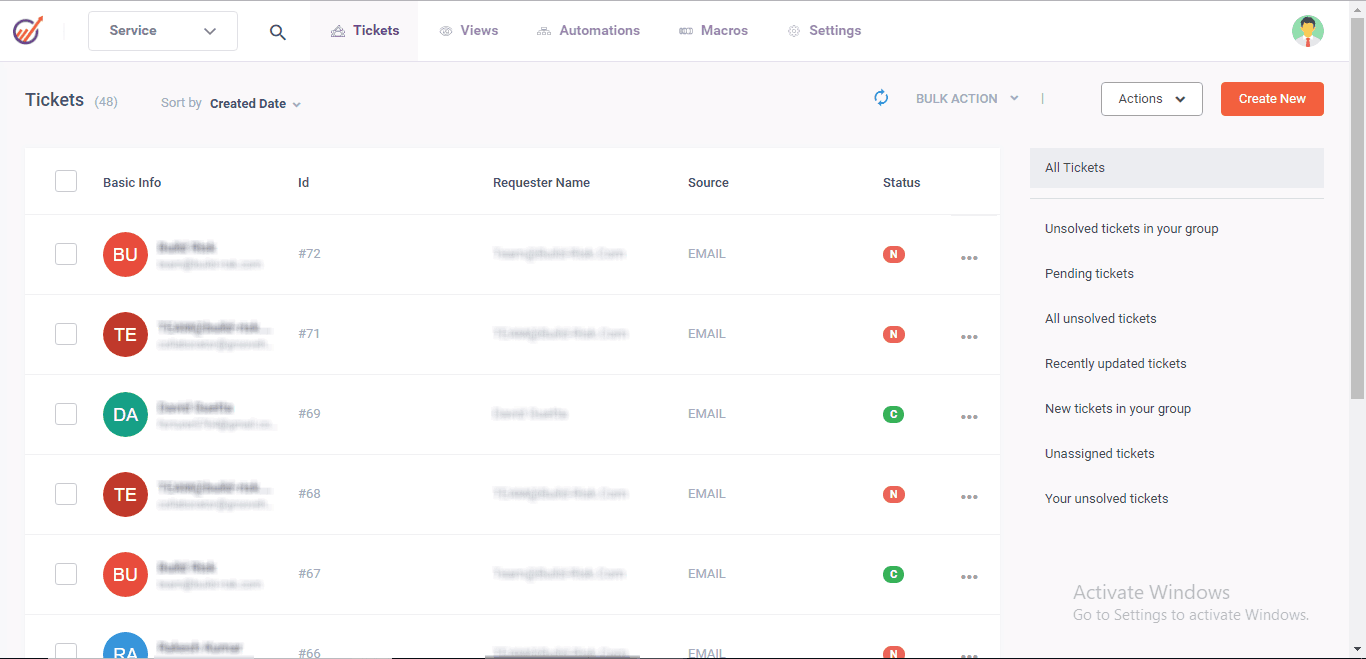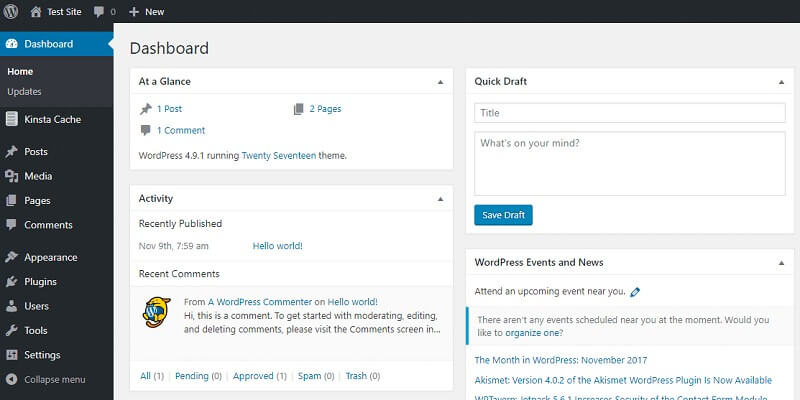Gem Team aims to replace chaotic “everything‑in‑one‑chat” setups with a governed workspace that merges messaging, calls, organisational structure, file storage and integrations. Below is a detailed overview, practical observations from real teams, and aggregated user feedback presented in a neutral-positive tone as part of our comprehensive Gem Team Reviews.
Tech Giants and Startups: Collaboration and Competition often highlight how innovative teamwork tools can bridge gaps and boost productivity across organizations. Gem Team makes modern teamwork easier by putting all of your contacts, collaboration, and organisation in one place. It stops chats, files, and calls from getting lost by keeping everything linked and easy to get to. This helps keep things organised, sharpens everyone’s focus, and makes sure everyone is on the same page. Designed for growing businesses and mixed teams, Gem Team makes it easier for teams to work together and stay on track through its user-friendly layout and seamless integrations.
Why Even Consider Gem Team?
Most companies scale faster than their internal communication stack. Chats in messengers, email attachments, documents in personal clouds—this creates a fragmented environment where finding the right file turns into a quest. Enhancing team collaboration with custom communication apps becomes essential in such scenarios. Tools like Gem Team propose gathering channels and content in one application, reducing context loss and accelerating decisions.
Gem Team Overview: What the Platform Is
Gem Team is a corporate communication space combining a messenger, work chats and channels, voice and video calls, organisation/department structuring, plus external storage connections. The idea: not just conversation, but a working system where participants know exactly where to find discussions, materials and task statuses.
Key Interface Elements:
- Direct messages—quick one‑on‑one talks without losing history.
- Group chats / project channels—context‑bound discussions with files and links.
- Conferences—video meetings without switching to third‑party services.
- Presence & typing indicator—the basic “pulse” that matters for distributed teams.
- Edit / delete messages—fix typos or update info without long threads.
Structure & Onboarding: How Gem Team Tames Chaos
The platform lets you group staff by organisations, departments, project teams. A newcomer doesn’t need to hunt for links—they see the communication map upon joining, which is priceless during scaling or when working with contractors.
Scenario: A new marketer logs into Gem Team and immediately sees “Marketing”, “Content”, “Ads”, the general “All Hands”, past campaign archives and current assets. Onboarding time shrinks dramatically.
Integrations & Files
Gem Team can connect to external storage—cloud or on‑prem. This reduces file duplication and mitigates the risk of important documents living in personal accounts. Centralised access + role‑based permissions = fewer losses and less confusion.
Gem Team Reviews: What Users Say
Below is an aggregated digest of typical feedback from teams using Gem Team. These are distilled, recurring observations—not promo quotes.
Positive Notes Most Frequently Mentioned
- “Finally everything in one place”—fewer switches between chat, storage and calls.
- “Onboarding newbies is easier”—structured workspace speeds up adaptation.
- “Context stays intact”—discussion + files + history in one window.
- “Flexible permissions”—handy when collaborating with contractors.
Neutral‑Critical Remarks (Constructive)
- Interface feels “dense” at first; a short tutorial helps.
- Some teams want more automations (bots / notifications from external CRMs & trackers).
- Security policies and role‑based access need configuring upfront.
Review Verdict: Overall sentiment is moderately positive. Teams that pre‑plan workspace structure and roles experience smoother adoption. If you migrate chats “as is,” chaos remains in a new shell and requires further tuning.
Gem Team for Distributed & Hybrid Teams
Remote work, project‑based collaboration, contractors—the new normal. When staff don’t share one office, Gem Team keeps everyone inside a shared operational frame: chat channel, meeting calendar, call archive and files at hand.
Security & Data Control: Why It Matters
Scattered data = leak risk. By consolidating exchange inside Gem Team and linking managed storage, a company lowers the chance of accidental access or document loss. Key questions to address during setup:
- Who administers access to departments and project chats?
- How are read / upload / export rights separated?
- Where is the backup of critical files?
Gem Team + Workflows: Where the Platform Shines
| Scenario | Pain Before | What Gem Team Gives |
|---|---|---|
| Onboarding new employee | Links scattered across chats | Ready workspaces per department |
| Project with external contractors | Files in email & personal chats | Role‑based access within the project |
| Urgent document edits | Unsure which version is latest | Connected storage + history search |
| Calls + chat | Need to switch to Zoom/Meet | Built‑in conferences in the same window |
Implementation Tips (Minimum Pain)
Step 1. Map the structure. Define orgs, departments, projects—don’t carry over chaos.
Step 2. Set permissions. Internal / external / temporary roles. Contractors shouldn’t see more than needed.
Step 3. Migrate files. Connect corporate storage. Minimise personal uploads.
Step 4. Short guide for staff. 5‑7 min video: where chat, where files, how to call.
Step 5. Pilot + feedback. Launch in one department, collect real reviews, adjust, scale.
When Gem Team Reveals Its Full Power
- Company grows from dozens to hundreds of employees.
- Multiple project streams with partial staff overlap.
- Strict data‑storage and audit requirements.
- Desire to separate work and personal communication.
Limitations & What to Prepare in Advance
Gem Team isn’t a “magic button.” Without channel‑naming discipline, clear structure and dedicated admins, any tool becomes yet another noise layer. A rollout plan is crucial.
Localisation & Use Cases
Suitable for multinational teams: multilingual UI, regionally compliant storage. A common case for distributed projects across CIS & EU is one account covering several legal entities and language zones.
Who Should Use Gem Team and Why
Gem Team is great for fast-growing businesses, startups, remote teams, and project-based organisations that have trouble with complicated communication and file storage that isn’t in one place. It makes everything easier by putting everything into one clean, organised workspace. If your team is always switching between email, chat apps, free video chat apps, cloud storage, and video conference tools to stay on the same page, this is the tool for you.
For new businesses, it makes it easy for new employees or freelancers to get started quickly by connecting them with the necessary teams and giving them access to the right project channels. Remote and hybrid teams may communicate, share documents, and make voice and video calls all in one spot, which cuts down on app fatigue and context loss. Mid-sized companies and agencies adore how Gem Team organises chats, tasks, and resources by department or project.
Gem Team’s role-based access makes sure that outside contractors only view what they need to see, which keeps critical data safe. Also, built-in storage connectors make it easy to keep files safe and in one place.
If your team is having trouble staying organised and wants workflow visibility, faster decision-making, and tighter security, it is a good option to look into. It helps make sense of chaos and makes it easier for modern teams to work together every day.
FAQ: Gem Team Reviews
Does Gem Team replace email?
No, but it reduces email usage for fast internal comms. Just like platforms discussed in Comcast Email: A Comprehensive Overview, teams can use real-time chats, group chats, and file sharing right in the platform instead of endless email threads. This saves time and keeps all the important talks, updates, and documents in one easily accessible place.
Can I connect external systems (CRM, trackers)?
Integrations are supported; the exact stack depends on the configuration. Gem Team lets businesses connect their current tools, like project trackers, CRM platforms, and other important programmes, to make processes more efficient. By combining these apps to boost your productivity, the platform ensures that data moves easily between systems, cutting down on manual changes and improving efficiency across all areas.
Does Gem Team handle large files & archives?
Yes, with connected corporate storage and adequate quotas. The platform is designed to process large volumes of data vs information efficiently, making it easy to understand how raw data is transformed into meaningful insights. It becomes relatively simple to upload, share, and store large files or folders within the platform over an extended period. Teams can track different document versions, avoid duplication, and securely access important files anytime without compromising performance.
Are there mobile apps?
The platform targets hybrid access; platform specifics are clarified during onboarding. This means that people can easily get to the Gem Team from their computers or phones. The system makes it easy for everyone on the team to communicate, share files, and work together while they’re on the go, whether they are in the office or working from home.
Is Gem Team suitable for remote or hybrid teams?
Gem Team is made to work with both remote and mixed teams. It brings your entire contacts, file sharing, and project management together in a single neat hub. Much like Google Workspace project management apps, it helps remote employees easily make calls, communicate updates, and collaborate without switching between multiple tools. This unified system keeps everyone aligned and makes the entire workflow more efficient.
Bottom Line: Should You Test Gem Team?
If your team has outgrown “messenger chat + Google Drive” and you waste time searching for content and switching tools, Gem Team deserves a trial. The platform structures communication, accelerates onboarding, and lowers data-leak risk through centralised permissions. Just as the importance of original content for blogging a guide emphasizes consistency and structure for long-term success, Gem Team ensures your workflows remain efficient and well-organised. With a solid rollout, it balances flexibility and governance effectively.
Gem Team is a reliable option for modern companies that want to make working together easier and connections better. Much like Teamwork: Project and Resource Management Software for Client Work, it puts calls, messages, file sharing, and team organisation all in one place, saving time and reducing misunderstandings. It helps teams stay focused and work efficiently by giving them a clear structure, strong security, and seamless integrations. Gem Team provides the right balance of power and flexibility for today’s dynamic workplaces, whether you’re handling remote teams or scaling rapidly.



